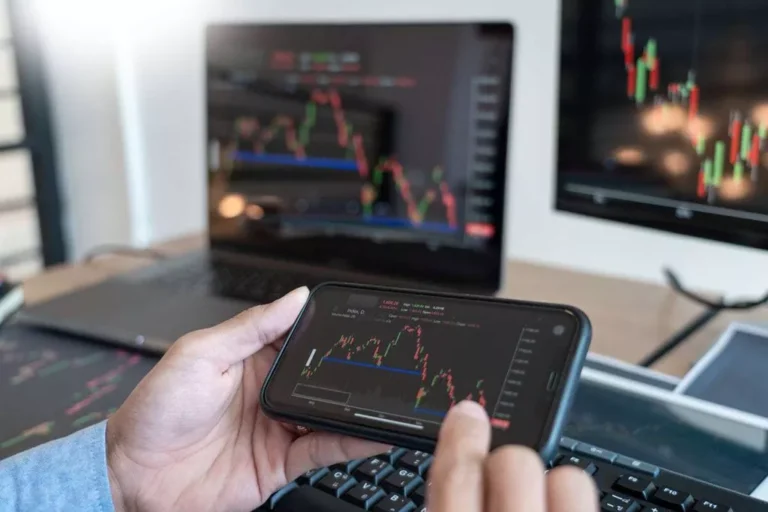The final counterparty is the traders placing opposite orders in the market, or a liquidity provider. This is the main advantage of the A-Book model – no conflicts of interests. The broker receives its commission irrespective of whether traders earn or lose their money. While perspectively both traders and the broker are interested in the successful trading. The more transactions traders make, the more commission their broker receives. B-book brokers can offer benefits like higher leverage and lower trading costs making them attractive to certain traders.
When a forex broker processes your trades in-house (with a dealing desk), it is a B book. In the case of a B Book, your forex broker acts as a counterparty to your trades. The B book broker goes by different names such as market maker or a fixed spread broker. While this might be the case, there are some advantages that a B book forex broker has to offer. Even when liquidity is low, you get a good execution of orders because your broker acts as the market maker.
However, many brokers use the B-Books and do not even hide it. The matter is that to bring client orders to the external market, brokers need to make contracts with a liquidity provider (and, as a rule, not just one), obtain licenses, provide technological what is a book vs b book support. All these are costs that the A-Book broker compensates at the expense of high mark-up to the spread. Brokers working on the A-book model are less risky but also potentially less profitable because they earn only on margin and commissions.
Binance and CEO Zhao Plead Guilty in Major Money Laundering Case
Then the request fell in the partner relations department’s lap, because they needed to make sure that extra lots did not get into partner payments. Then, in some cases, they had to contact the dealer to make sure that everything was traded according to the rules. Then the application went to the finance department, which once again verified the numbers. And finally, the secretary manually collected problematic requests and took them to the CEO for final approval. This might be a bank, non-bank electronic market maker, hedge fund, or even another forex broker.
It means any withdrawal under $100 will occur automatically, but in a case you want to manually approve any amount, you can do it. John is a professional trader who regularly withdraws profits from Company X. That is why no one was surprised when he sent another request to withdraw his profit for the previous month. The finance department was ready to approve it, but the withdrawal control system was set in a way that all large requests over $10,000 must also be approved by the client’s personal manager. There are two types of broker operating technologies – A-Book and B-Book models, which differ in the way client orders are brought to the market. Akabogu Chukwuebuka Nicholas CEO of Intelpro Forex Trading Limited Nigeria, over the past years I have been encouraging and training young individuals on how to trade on the exchange market.
How B-Book Brokers Make Money
A-Book is a kind of FX execution model, referred to as a non-dealing desk broker or an STP (Straight Through Processing) broker. These brokers make money by charging commissions or by profiting from spreads. An A-Book broker works as a bridge that links a trader’s terminals to a liquidity provider, or LP. Thus, the A-Book approach implies that orders are sent directly to the interbank market, where these orders are filled by liquidity providers.
Thanks to a well-configured withdrawal control system, the broker team noticed that something was wrong, quickly reacted to an unusual situation, and prevented a large-scale case of fraud. We conclude that none of the schemes https://www.xcritical.com/ can be a panacea for losses. You must decide which business model to choose for you, depending on your business plans and strategies. This model is an optimal solution for both brokers and traders, but a tricky one.
On the one hand, such a model encourages competition between liquidity providers, thus narrowing the spread and reducing the commission fees. On the other hand, traders do not receive the best price because of the mark-up added to the spread. Another problem is that the quality of the services offered by liquidity providers is deteriorating over time. The counterparty to the trade is a market maker, which tries to find a matching order from its other clients (if the trader wants to buy 1 lot, the broker looks for someone who will sell 1 lot). If there is no such an order, the market maker acts as a counterparty, thereby arising a conflict of interests. In this case, the trade’s loss becomes the market maker’s profit.
We are going to discover the difference between A book and B book broker models. A-Book models are the most common form of broker operating technology. Each one has its own set of perks and downsides to consider. What this means is that a broker operating under this type of a model passes your orders directly to the liquidity pool.
Advantages of B-Book Brokers
A market maker is often a synonym for the B-Book Forex broker. This scenario involves a broker trading against his customers. The broker does not use an external liquidity pool to carry out deals; instead, the business serves as a counterparty to the trader’s transactions. Essentially, a broker will sell to a trader who makes a buy order and vice versa. It is apparent that this kind of approach leads to conflicts of interest between B-Book brokers and their customers.

Thanks to the fact that his broker used the UpTrader withdrawal control system, John was able to keep his monthly profit, and the company prevented reputation losses. It allowed the company to maintain a trusting relationship with their clients and to ensure the safety of their funds. In the previous article, we wrote that UpTrader Forex CRM has a useful system for controlling fund deposit and withdrawal. In short, it allows you to flexibly configure the approval settings for withdrawal requests though a variety of parameters.
Each participant tries to offer the best price, and all traders get the best current Bid/Ask price. At the moments of the EURUSD highest liquidity, the spread could be around zero level, however, there can’t be literally zero spread. A-Book model is the business model of a broker where all trader’s orders are forwarded directly to the forex liquidity provider, who then redirects them to the interbank market. Brokers devised a hybrid model in order to overcome the limitations of the A-Book and B-Book methods.
- A Dealing Desk can change the leverage, spread, affect the accuracy of the quotes, artificially increase slippage, manipulate client’s orders.
- An example of such a model is a combination of cent (B-Book) and ECN (A-Book) accounts.
- Whenever the broker needs to buy, an LP will be willing to sell.
- This means that clients can lose more than their account balance if their trades go against them.
The reality is that the broker still takes the opposite side of Elsa’s trade. It’s important to point out that Elsa is still only trading with her broker. This long EUR/USD position now directly offsets the short EUR/USD position it holds against Elsa.
He’ll also be looking for information on next-generation gaming items and fresh additions to the company’s automotive roadmap. He is optimistic that the company would provide more precise expectations about its software prospects. If there is no DOM of level 2, which can be used to assess supply/demand and the further direction of the price, you do not deal with an ECN broker. Other brokers present themselves as STP, being in fact common Dealing Desks or kitchens. After all, a B-Book kitchen scheme does not always mean a scam, so do not hurry to put labels. Know more about the long-run optimization with hybrid execution in Brokeree Liquidity Bridge.
However, there are a few key indicators that can help traders identify whether a broker is a b book broker or not. To sum it up, none of the solutions is ideal, and none of them will avoid potential losses. If you are a broker, it would be best for you to decide which model is appropriate for your company’s specific goals and strategy.
Another point to remember is that a B book forex broker offers fixed spreads. This means that whether you trade during peak market hours or during off-market hours, a B book forex broker is more beneficial. Forex is different from equities or futures trading because your broker can choose to trade against you. When your broker sends all your trades to the real market or their liquidity providers, this is known as A Booking.





